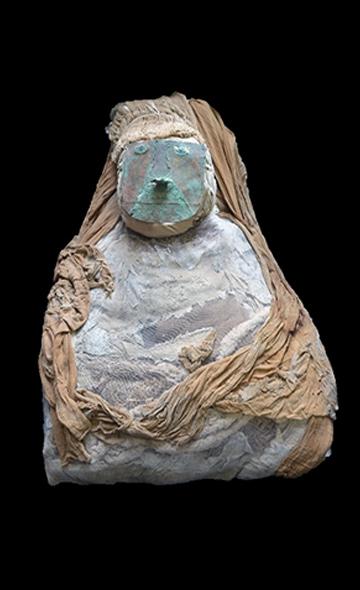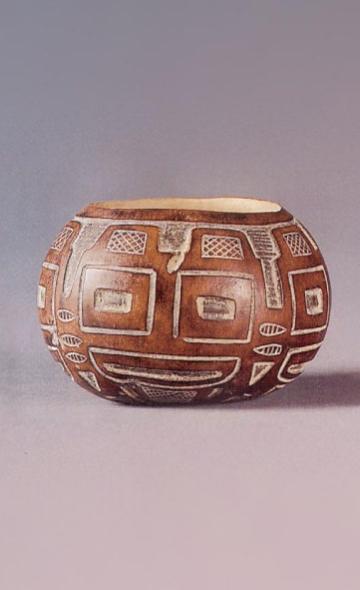- Visitors
- Researchers
- Students
- Community
- Information for the tourist
- Hours and fees
- How to get?
- Virtual tours
- Classic route
- Mystical route
- Specialized route
- Site museum
- Know the town
- Cultural Spaces
- Cao Museum
- Huaca Cao Viejo
- Huaca Prieta
- Huaca Cortada
- Ceremonial Well
- Walls
- Play at home
- Puzzle
- Trivia
- Memorize
- Crosswords
- Alphabet soup
- Crafts
- Pac-Man Moche
- Workshops and Inventory
- Micro-workshops
- Collections inventory
- News
- Researchers
- The Lambayeque funerary bundles from the El Brujo Archaeological Complex
News
CategoriesSelect the category you want to see:

International academic cooperation between the Wiese Foundation and Universidad Federal de Mato Grosso do Sul ...

Clothing at El Brujo: footwear ...
To receive new news.
Por: Rubén H. Buitron Picharde
By Rubén H. Buitron Picharde
Wiese Foundation | El Brujo Archaeological Complex.
Laboratory Manager
Most people are amazed at the objects and knowledge that our ancestors achieved, especially those related to death, such as mummies and funerary bundles. In effect, they are repositories of memory and knowledge about life and death in times past.
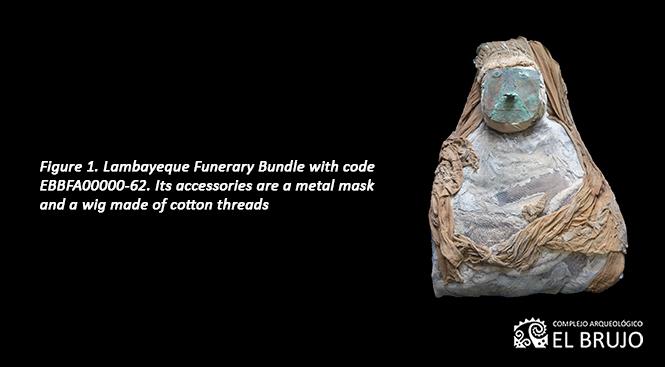
Funerary bundling is a tradition that has very remote antecedents; its presence and complexity have been reported in the various pre-Hispanic periods. Even the most important archaeological find at the El Brujo Archaeological Complex (CAEB), the Lady of Cao, was found within a large bundle from the Moche period.
However, contrary to what is believed, the vast majority of bundles from the CAEB are not Moche (Early Intermediate period, 100-800 AD) but from the Lambayeque period (800-1375 AD). After the collapse of Moche society, around 700 AD, the Huaca Cao was reused as a cemetery. The slope that covered the north façade of the temple was reoccupied by graves where bundles were placed accompanied by food, vessels and other artifacts.
Currently, the CAEB archaeological collection has 142 duly identified funeral bundles, of which 95% correspond to the Lambayeque period. The characteristics of these bundles are quite complex and intriguing, as they present different attributes from their peers on the Central and South Coast, marking their own style of local production with subtle differences between them, directly linked to purchasing levels, sex, productive activity, etc.
How were the Lambayeque de El Brujo funeral bundles made?
Death in pre-Hispanic times was not easy. It involved a deployment of processes such as the preparation of the body of the dead individual, obtaining wrappings for the corpse and accessories, the preparation and obtaining of offerings, the construction of the funeral structure, rituals and the mourning or impact generated by the absence of a member of society.
Regarding the preparation of the bundles, we have been able to identify that there is a general treatment with variations in supplies and accessories:
- Preparation of the individual. Most individuals are in a sitting and flexed position. This position is reinforced by cotton ropes that hold the ankles and arms. Metal plates were placed inside the mouth and/or in the facial area. Then they covered it with seedless cotton balls.
- Placement of wrappers. The preparation of the funeral bundle consisted of covering the individual with cotton textiles. They began by covering the head and then the rest of the body. In order to prevent the fabrics from falling off, a group of cotton ropes adjusted the bundle to the height of the neck and thorax. This process of coating the individual is carried out several times, making the bundle gain size and volume. During this process some special elements such as vegetables, artifacts, etc. can be included.
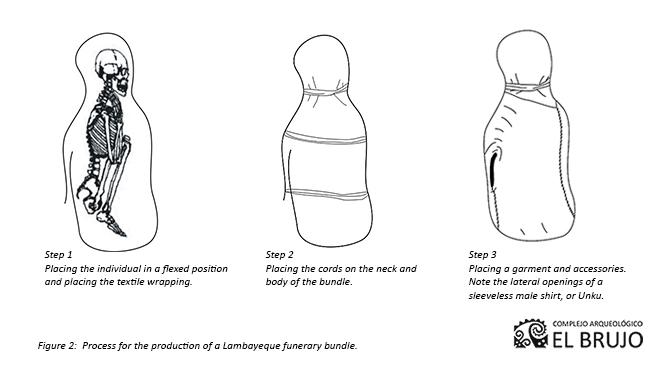
- Placement of accessories. Once the wrapping has been placed, the treatment is completed with the placement of various accessories. One of the most common procedures is the application of red and yellow pigment to the "face" area of the bundle. In addition, the presence of masks, wigs, crowns and turbans has been identified. Finally, the bundles were dressed in typical clothes of the time. The goal is for the bundle to resemble a human form as closely as possible.
Did the Lambayeque bundles of El Brujo have clothing?
Indeed, it has been identified that 61% of the collection of Lambayeque bundles from El Brujo have clothing. This is due to the importance of clothing in pre-Hispanic times, beyond covering the body. The bundles wear unkus (clothing with vertical slits) or anakus (clothing with horizontal slits), as the case may be. This type of garment has been related to the sex of the individual (Aponte, 2000; Prümers, 1998). Thus. the unku has a correspondence with the male, while the anaku with the female.
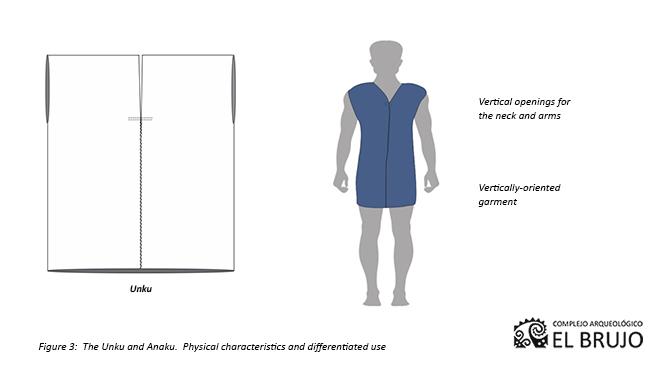
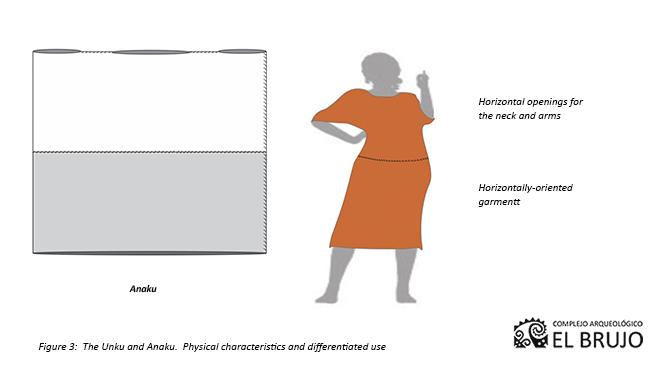
What were the unku and anaku like?
The making of these garments is quite interesting and simple. In the case of the unku, it has vertical arm and neck openings, while the anaku has horizontal arm and neck openings.
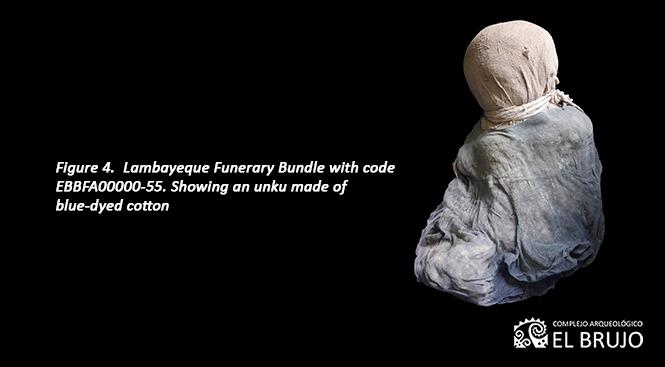
Although the clothes suggest the biological sex of the personage, this is not decisive. Anthropological studies must be carried out to confirm this relationship. However, we can affirm that the Lambayeque bundling at CAEB is one of the most complex and stylistically virtuous in the Andes.
Therefore, and as part of the research, conservation and dissemination work, Wiese Foundation organizes the workshop "The Lambayeque bundles of El Brujo" on the first Sundays of each month, where participants will have the opportunity to visit the laboratories and depots guided by specialists, and even reproduce the bundling techniques with recycled supplies. The event is aimed at the general public.
Bibliography
Aponte, D. (2000). Women's dress on the Central Coast of Peru during the Late Intermediate Period. Atacameño Studies N ° 20: 91-101.
Franco, R. and Gálvez, C. (2007) Post-Mochica funerary practices. Unpublished manuscript.
Lombardi, G. and Verano, J. (1997) Radiological study of Lambayeque funerary bundles (El Brujo archaeological complex): Preliminary report. Report delivered to the El Brujo Archaeological Project.
Mujica, E. (Ed.) (2007). El Brujo. Huaca Cao, Moche Ceremonial Center in the Chicama Valley. Lima: Wiese Foundation.
Prümers, H. (1998). A new type of shirt from ancient Peru. 50 years of American Studies at the University of Bonn. 217-237.
Shimada, I (Ed.) (2014). Sicán culture. Pre-Inca splendor of the North Coast. Editorial Fund of the Congress of Peru.
Researchers , outstanding news


